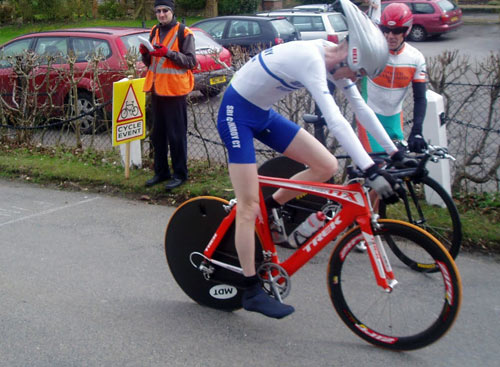VO2 Max is the term given to your maximum aerobic capacity. VO2 Max is effectively the amount of oxygen that you can take in and use. It is your maximal aerobic capacity.
It is expressed as litres (ml) of oxygen / weight Kg / per min.
Some of the top athletes have recorded figures as high as 95 ml / KG/ Min
- Greg Lemond had a recorded 92.5 ml / KG / Min
- Miguel Indurain had a recorded 88 ml/ KG / Mind
- According to his coach, Coyle, Lance Armstrong had a VO2 Max level of 85 L/KG/Min. Though in this article, Jamie Pringle, suggests it would have been closer to 93 mls / KG / Min (Cycling Weekly – how powerful are the pros)
To put it into perspective, the average untrained male, will have a VO2 max of around 36-50 ml/ KG / Min.
What Determines Max VO2?
There are many genetic factors which determine VO2 Max. Size of lungs, cardiac output, efficiency of blood and capilliary system. It is also determined by age, gender and general fitness.
Importance of Max VO2
VO2 Max is very important in determining aerobic capacity and is very important for endurance sports. Someone with a low VO2 max will not be able to be competitive with someone with a much higher VO2. However, VO2 isn’t everything.
Other things which are important:
- Tolerance to lactic acid
- Efficiency of using oxygen generated.
- Tolerance to pain and determination.
- Efficiency of cycling action.
VO2 and Threshold Level
VO2 is above your threshold level. Your VO2 Max will be roughly 105-120% of your threshold power. Studies suggest training VO2 max, can improve your threshold capacity at the same time. High Intensity intervals (90-95% HR max) increase VO2 Max more than threshold training (link) Intervals and Threshold power (link pdf)
VO2 Max and Heart Rate
It is possible to estimate your exercise intensity as a percentage of VO2max from your training heart rate. A study by David Swain et al. (1994) [1] using statistical procedures examined the relationship between %MHR and %VO2max. Their results led to the following regression equation:
- %MHR = 0.64 × %VO2max + 37
Examples
- 90% Max heart rate = 82% Max VO2
- 95% Max hear rate = 90% Max VO2
- Though using heart rate has limitations because of the delay in heart rate responding to effort levels. Also, as you get close to 100% of VO2 max, it suggests a heart rate of above 100% which doesn’t make sense.
- It is more accurate to find VO2 max in terms of your power.
Finding VO2 Max Rate
- The Astrand test uses a cycle ergometer and 6 minutes of riding at a heart rate of 130-160 bpm. Requires assistant to measure results.
- Metabolic Tests to find Vo2 Max
Vo2 Intervals
To ride at your VO2 max is a high intensity interval. It requires substantial effort and determination to keep your effort at this maximal level. It is not a sprint interval, but it is difficult to maintain for a period of 5 minutes. VO2 Intervals could involve
- 3* 3 mins, with 5 minute rest in between
- 4 intervals of 4 minutes. With a 5 minute gap between first two. And then a long rest between the 3rd and 4th interval.
- or 10*30 seconds.
Non Scientific VO2 Intervals.
As part of my training, I’m often doing hill intervals. Often the target is to ride up the hill as quick as I can, but not be utterly spent. These hills may be 4 or 5 minutes long. On a ride I will warm up for 30-40 minutes, then make a measured effort up the hill. I don’t collapse at the end, but I’m pretty to close to my racing limit.
Then I will take quite a decent rest, as I ride to another hill, and then try and repeat the interval.
On the second interval, I’m usually about 15% slower because of the lactic acid and tiredness of the muscles. Therefore, you can’t quite get to the same power output as the first interval. After that, the 3rd, 4th and 5th intervals can be as quick as the second.
If I do shorter hills of say 2 minutes, I try to keep a similar effort level throughout the interval repetitions. To keep this constant effort requires to hold off slightly and resist the temptation to sprint like a hill climb. The benefit of holding back just a little, is that you can then have several intervals at this same high intensity. The intervals get harder and harder.
Quality over Quantity
The amount of intervals you can do at your VO2 threshold will be quite low in the beginning. The important thing is to push yourself into the right level of effort. Through the season, you can slowly increase the quantity of intervals. But, usually, you will know when you’re fatigued and just can’t get anywhere near the level. Needless to say, you need to be reasonably fit before progressing on to this VO2 max intervals.
From my training diary, I see I often did 3 * 3minute efforts in early years of racing. On the 4th, I couldn’t do anything close to VO2 max. I remember thinking – ‘only 9 minutes of training! But, over the years, your tolerance improves. Last year, I found I could maintain the same intensity for a higher number up to 10* 2 minute intervals at close to VO2 max. But, every training session is different, when you’re pogged, you might as well go back recover and try another day. It is important to listen to your body and get to feel what you body can cope with.
Related
Further Reading


No comments yet.